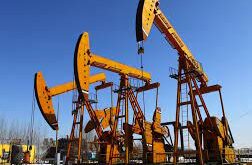Monday, April 20, 2020, was a historic day for New York Mercantile Exchange’s (NYMEX) crude oil contracts as the price of the item plummeted to minus $ 37.63 for the first time in the industry’s history. Here is why all this happened.
Why the negative price for oil:
The bulk of crude oil transactions on major world stock exchanges take place in the form of futures contracts (pre-purchases/pre-sale contracts). In these contracts, the buyer is required to deliver the oil on the specified day and place, so there are different prices for the oil at any given time. For example, future trades for West Texas Intermediate (WTI) index crude oil in 2020 are based on delivery on the twentieth day of each month, and people who buy oil for May are required to take on the purchased product on the twentieth day of the month.
But in the current situation, the oversupply of crude has filled up storage facilities, especially for the WTI marker and it has been difficult to find empty space for oil storage.
Last week the Energy Information Administration of the US announced that the Cushing, Oklahoma, storage facility, America’s key storage hub and delivery point of the West Texas Intermediate contract, had been 72 percent full as of April 10.
Under these circumstances, people who had bought oil for May 20 delivery would not have the capacity to use oil at refineries or storage facilities, therefore, investors who have oil delivery contracts for May, no longer want the oil, meaning the costs of storage increases. In the end, they have to pay to have their oil shipped.
Date of maturity for futures trading for delivery on May 20 are today (April 21), and the price of this index for delivery in the other months of 2020 is between $20 and $30 per barrel.
Being landlocked:
Lack of access to the sea is also another reason for the negative price of oil in some parts of the United States. For example, WTI crude production in Midland is 500 miles away from the Gulf of Mexico, and producers in the region have to pay for the logistical costs of carrying their oil to the storage facilities in the Gulf of Mexico. This issue has pushed down oil prices not only in the United States but also in western Canada and Russia.
This is not the case with Brent crude, however. Brent crude oil is produced near the North Sea and has not fallen below $20 a barrel, which is very close to the final production cost for that type of crude. Forecasts also suggest that the price of this type of crude oil, which is close to high seas, will remain in the same range.
In fact, crude oil, which has a higher production cost but easier access to the sea and storage plants, has a better position than crude oil produced at a lower cost but on land (such as crude oil from the United States, Russia, and Canada).
The 1998 historical experience, in which the storage capacity of the oil market peaked, is a good proof of this issue, as the crude oil produced in landlocked facilities experienced the largest drop in prices and oil prices fell to $8 a barrel. These conditions will gradually cause oil producers to gradually stop production on landlocked fields. Experts believe that continuation of this trend may drastically reduce crude oil production in the United States, Canada and South America.
Hard Price Recovery
The historical trend of oil market crises, such as 1998 and 2008, shows that the rapid decline in oil prices is not usually accompanied by a proportional recovery process, and that rising prices to normal will often take longer. According to the most recent report by the Organization of the Petroleum Exporting Countries (OPEC) and the International Energy Agency (IEA), the oil market is faced with a 20-mbd supply glut.
In addition, in the period of declining oil prices, we see that the difference between the spot and futures prices in the financial market has begun to widen, leading to a deepening of the contango situation and an increase in incentives to store oil for speculative purposes in different parts of the world.
Contango is a situation where the futures price of a commodity is higher than the spot price. Contango usually occurs when an asset price is expected to rise over time. This results in an upward sloping forward curve.
Analysts cite the current situation as the historic oil market’s contango, arguing that it reflects barrels that cannot be bought in the physical market and are sold at very low prices, or that stocks are filled up more than expected, or at least traders had expected to happened so soon.
According to historical records, it was OPEC that stopped the strengthening of oil storage due to the frequent increase in the depth of the contango and re-balanced the market. Historical experiences from 1998, 2008, and 2014 confirm this pretty well.
 Iran Energy News Oil, Gas, Petrochemical and Energy Field Specialized Channel
Iran Energy News Oil, Gas, Petrochemical and Energy Field Specialized Channel




